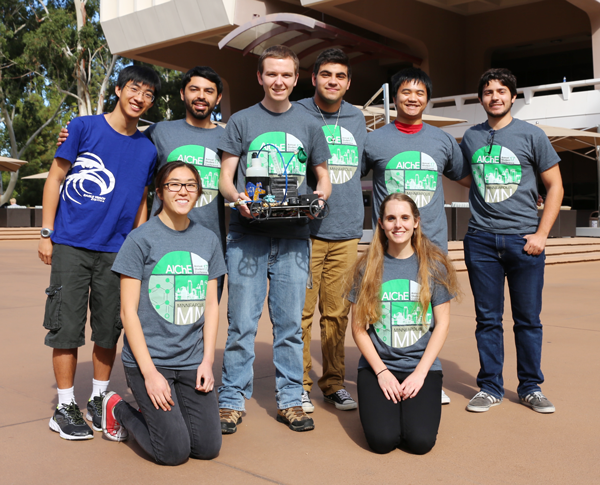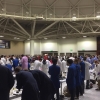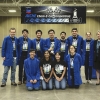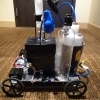Chem-E Car Team Finishes Second Worldwide
 Nov. 15, 2017 - UC Irvine’s Samueli School Chem-E car team placed second overall and first in U.S. teams in the American Institute of Chemical Engineers (AIChE) 2017 national competition, held Oct. 29 in Minneapolis, Minn. Forty-four schools competed, including 13 international teams. UCI’s car, Model S, landed nine centimeters past the finish line. Indonesia’s Sepuluh Nopember Institute of Technology took first place, ending two centimeters off the finish line.
Nov. 15, 2017 - UC Irvine’s Samueli School Chem-E car team placed second overall and first in U.S. teams in the American Institute of Chemical Engineers (AIChE) 2017 national competition, held Oct. 29 in Minneapolis, Minn. Forty-four schools competed, including 13 international teams. UCI’s car, Model S, landed nine centimeters past the finish line. Indonesia’s Sepuluh Nopember Institute of Technology took first place, ending two centimeters off the finish line.
This is the Samueli School’s third trip to the national competition, an annual event that challenges student teams to design and construct a chemically powered vehicle that must start and stop based on a chemical reaction. “We were the car to beat through most of the competition,” said Sara Steinhauser, last year’s project manager. UCLA and USC were also at the event, representing the west.
UCI’s Model S car finished first in the western regional competition last spring. The car is equipped with a hydrogen fuel cell and uses the reaction of hydrochloric acid and metal magnesium to create hydrogen gas. The gas flows from the reaction vessel to the fuel cell, which generates electricity for two motors that power the car. To stop the car, students employ a two-part clock reaction, using a timed mixture of diluted sodium thiosulfate and hydrochloric acid, an LED light and an Arduino sensor.
The students begin the car’s starting and stopping reactions simultaneously by injecting the acid into a dark container holding the sodium thiosulfate. When the two solutions mix, they change from clear to cloudy. A sensor detects an LED light that shines through the solution from one side to the other. When the Arduino detects a quick decrease in light due to the injection, it signals the motor to turn on. When the reaction nears completion and the sensor receives almost no light because the LED is blocked by the opaque solution, the circuit directs the motor to stop.
To vary Model S’s distance, the concentration of sodium thiosulfate is changed. Less sodium thiosulfate results in production of a less solid sulfur, allowing the sensor to receive the light longer and the car to travel farther.
Chem-E cars must carry a specified cargo and travel a designated distance; this year, it was 157 ml of water and a target distance of 23.5 meters. The teams learn the load volume and required distance just minutes before the competition begins.
The students credit their second place finish to all the time they spent testing. They had to make a minor tweak to their car based on judges’ feedback before nationals, adding a balloon to capture the slight amount of gas being released from the car.
The Chem-E car enters this year with a new faculty adviser, Daniel Knight, an assistant professor of teaching in the chemical engineering and materials science department. The team has nine returning members and four seniors. “We will be building two new cars and are recruiting new members,” said Mario Soler, who is serving as a project manager along with Kevin Pham.
Team member Cole Johnson, a junior, said that being on the team has given him real hands-on practical experience in the engineering design process. “What I like about it is that it’s all us. We come up with all the reactions and test the car for months. We work out all the issues on our own.”
The 2018 western regional competition will be held at UCI in April. Farid Nasser, former project manager, will be the UCI contact for AICHE in coordinating the event. “Our UCI teams continue to be successful. Every year, we expect more.”
– Lori Brandt




